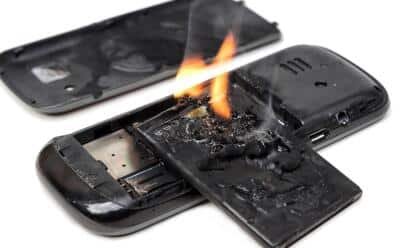Introduce Lithium Polymer Battery
Lithium Polymer Battery, known as Li-Po battery, represents a specific type of rechargeable battery based on Lithium ion battery(Li-ion battery). Fundamentally, it is a subset of Li-ion battery. Nevertheless, for easier communication to public, manufacturers and media simply call it lithium polymer or Li-Po battery.
Li-Po battery has many obvious advantages. If you do not know Li-Po battery. This article will give a very clear explanation about it.
The whole article is based on the definition, advantages and disadvantages of Li-Po battery to clearly illustrate Li-Po battery.
Want More Details: Download our battery design ebook.Content
1.What is Li-Po battery?
2.Advantages of Li-Po battery
3.Disadvantages of Li-Po battery
4.Which one is better? Li-ion battery or Li-Po battery?
Lithium Battery Design Design Ebook Download(2M, 20 pages, PDF)
What is Li-Po battery?
As we all known that a common battery include a positive electrode, a negative electrode and an electrolyte. Li-Po batteries refer to at least one element in the battery that is a polymer material. In Li-Po batteries, polymer materials are mainly used for cathodes and electrolytes. The cathode material uses conductive polymers or inorganic compounds commonly used in lithium-ion batteries. Lithium metal or lithium-carbon intermediate layer compounds are usually used in negative electrodes. Electrolytes are used as solid or colloidal polymer electrolytes, or organic electrolytes. Since there is no excess electrolyte in the Li-Po, it is more reliable and stable.
Li-ion Battery is a kind of chemical battery. Compared with Li-ion battery, it has the characteristics of high energy, miniaturization and lightweight.
Easily get confused with Lithium battery, Li-ion battery and Li-Po battery
(1) Lithium battery: lithium metal as the negative electrode.
(2) Lithium ion battery: use non-aqueous liquid organic electrolyte.
(3) Lithium-ion polymer battery: Use polymers to gel liquid organic solvents, or directly use
all-solid electrolytes. Lithium-ion batteries generally use graphite – like carbon materials as the
negative electrode.
Advantages of Li-Po battery:
(1)High operating voltage:
Li-Po battery single cell operating voltage up to 3. 6v ~ 3.8v which is much higher than NiCd battery and NiMH voltage.
(2)High capacity density:
Li-Po capacity density is 1.5 ~ 2.5 times that of NiMH or NiCd batteries, or higher.
(3)Small Self-Discharge:
Although Li-Po batteries are placed for a long time, its capacity loss is small.
(4)No Memory Effect:
Li-Po batteries do not need to empty the remaining power before charging, easy to use. It is a common characteristic in Li-ion batteries.
(5)Good Safety Performance:
Li-Po batteries in the structure of the aluminum-plastic soft packaging, as opposed to the metal shell of the liquid battery cells. In the event of a safety hazard, liquid cells are prone to explosion, while polymer cells will at most only gas drum.
(6)More thinner & lighter
Li-Po batteries are ultra-thin, the battery can be assembled into the credit card. Ordinary liquid lithium using a custom shell first, then plug the positive and negative materials, the thickness to 3.6mm below the technical bottleneck. Polymer cells do not have this problem, the thickness can be achieved below 1mm, in line with the direction of the current demand for cell phones.
(7)Light Weight:
Lithium-ion batteries use polymer electrolytes, so there is no need for a metal casing to protect the outer packaging. In terms of weight, the polymer battery is 40 percent lighter than a steel-encased lithium battery of the same size, and 20 percent lighter than an aluminum-encased battery.
(8)High Capacity:
In the case of the same size specifications, the capacity of lithium polymer battery is 10 to 15% higher than that of steel shell battery, and 5 to 10% higher than that of aluminum shell battery. Lithium-polymer batteries have become the preferred choice for smart-phone manufacturers. Most of the new smart-phones on the market today also use polymer batteries.
(9)Small Internal Resistance:
the internal resistance of Li-Po battery cells is smaller than the general liquid cells. At present, the internal resistance of domestic polymer cells can even do below 35mΩ. Small internal resistance greatly reduces the self-consumption of the battery, extending the standby time of the phone. Such a small internal resistance can already reach the international level. This kind of polymer lithium battery that supports large discharge current is ideal for remote control models, becoming the most promising alternative to NiMH batteries.
(10)Shape Can Be Customized:
manufacturers do not have to be limited to the standard shape, able to make the right size. Li-polymer batteries can increase or decrease the thickness of the cells according to demand. In addition, Li-polymer batteries develop new cell models with cheap prices and short open-mold cycles. It can even be tailored to the shape of the device to make full use of the battery casing space and enhance the battery capacity.
(11)Good Discharge Characteristics:
Li-polymer batteries use colloidal electrolyte. Compared with liquid electrolyte, colloidal electrolyte has smooth discharging characteristics and higher discharging platform.
(12)Simple Design of Protection Plate:
Because of the use of polymer materials, Li-polymer battery cells do not catch fire and do not explode. The cell itself has enough safety, so the protection circuit design of polymer battery can consider omitting PTC and fuse, thus saving battery cost.
Want More Details: Download our battery design ebook.Lithium Battery Design Design Ebook Download(2M, 20 pages, PDF)
Disadvantages of Li–Po Battery
1.Short life cycle:It supports less recharge life which is about 300 to 400 cycles.
2.high cost:The cost is almost double than Li-Ion battery. Because costumers want to design their own batteries, related design fees, manufacturing fee are high.
3.No Standard Shape:most battery manufacturing for high volume consumer market
4.Fire: Its chemistry leads to fire when Li-Po battery is punctured.
Li-ion battery Better? or Li-Po battery Better?
Li-Po battery is better for its good performance and varied shapes.
Li-Po battery is the upgrading product of lithium ion battery. Compared with popular lithium-ion batteries, it has the advantages of large capacity, small size (thin) and safety (not explosive). However, due to the upgrading of the whole industrial chain takes some time, its cost is still relatively high, and it is only used in high-end digital products (ultra-thin notebook computers, etc.).
In other words, Li-ion battery has good ratio of performance and price for normal people. If you in spite of money or you want to design a high-level electric device, Li-Po battery is an ideal production for device designers.
Li-Po battery is the third generation of Li-ion battery which is developed on the basis of steel shell and aluminum shell battery. It is a kind of new energy battery widely recognized in the industry.
Li-ion Battery or Li-polymer Battery?
According to the electrolyte materials, Li-ion battery is divided into liquid lithium ion battery and polymer lithium battery or plastic lithium battery.
Do you know what are the difference between Li-ion and Li-polymer battery?In this article, we’re going to review about the differences between Li-ion and Li-polymer battery.
We hope to give you the information you need to make the best possible choice!
Lithium-ion Battery vs Lithium-polymer Battery
Between lithium-ion and lithium-polymer batteries, the most significant difference is the chemical electrolyte between their positive and negative electrodes. A coin has two sides, both lithium-ion and lithium-polymer batteries have their pros and cons. Typically, the advantages of a lithium-ion battery are their high power density and lower cost than lithium-polymer battery. Lithium-ion batteries are incredibly efficient. Li-ion in a more flexible casing.
On the other hand, Li-Po batteries are generally robust and flexible. Especially when it comes to the size and shape of their build.We are going to give three charts to show their differences and similar facets.
In the below table, we conclude the same parameters between Li-ion and Li-Po battery
| Parameters | Li-ion battery / Li-polymer battery |
|---|---|
| Usable Voltage Range | From 3V to 4.2V |
| Life Span | Long |
| Charge Temperature | 0 to 40 ℃ ℃ |
| Storage Temperature | -20 to 35 ℃ |
Lithium Battery Design Design Ebook Download(2M, 20 pages, PDF)
| Parameters | Li-Po battery | Li-ion battery |
|---|---|---|
| Shape DIY Flexibility | High | Low |
| Weight | Light weight | Relatively heavier |
| Safety | More safety. No explosion |
Have chances to fire and explode (low possibility) |
| Charging time | Shorter charge | Relatively longer charge |
| Capacity | 2 times of Li-ion battery | Relatively lower |
| Capacity loss over time | Retains charging capacity better | Loses actual charging capacity |
| Temperature range usage | -20 to 70 ℃ | -20 to 60 ℃ |
| Impedance | <50mΩ | <100mΩ |
Li-ion battery also have some advantages among Li-Po battery.
| Parameters | Li-Po battery | Li-ion battery |
|---|---|---|
| Energy density | Decreased cycle count | Higher |
| Cost | More expensive | Cheaper |
Which kind of battery should I choose? Li-ion battery? Or Li-Po battery?
Generally speaking, they have some subtle differences. For this question, you should give your designed production a clear position.
Both Li-ion and Li-Po battery can used in mobile, laptops and commonly used electronic products.
If your production is included in above list, you need to consider about your budget. If you want to design a high performance production, choose Li-Po battery boldly.
Of course, they have some different applications: Polymer batteries are more likely for small-size applications, while lithium-ion batteries are more promising for large-size ones.
Li-Po battery: radio controller equipment and aircraft, Electrical vehicles.
Li-ion battery:Power backups/UPS, Electric mobility and Energy Storage Systems
Above mentioned applications are your references, we hope you can make your good choice according to this article.
Want More Details: Download our battery design ebook.Lithium Battery Design Design Ebook Download(2M, 20 pages, PDF)
Prev Article: Lithium Battery Performance and Quality Tests
Next Article: Common Causes of Lithium Battery Explosion and Avoidance Measures



Leave A Comment